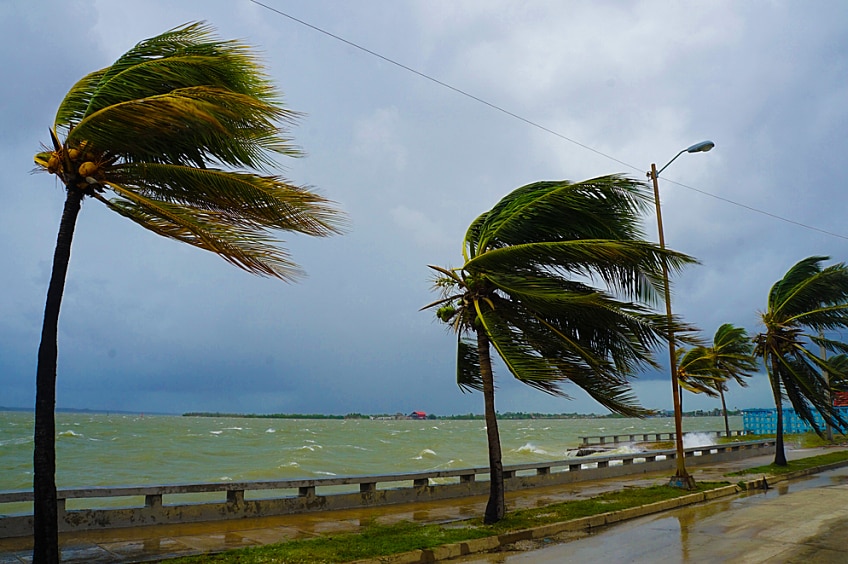Disaster preparedness ensures that if you ever experience a disaster, you're ready. Disasters come in different forms, including severe weather events, wildfires, and even health crises such as a global pandemic.
Here's what you can do ahead of time in order to secure your home, protect your family, and recover quickly following an event.
Know Your Risk
Where you live and work can subject you and your family to higher risks of certain natural disasters. It's important to understand those risks in order to have the best disaster preparedness plan in place.
According to the National Oceanic Atmospheric Association (NOAA), almost 40% of Americans live in coastal areas, putting them at risk of hurricanes along the eastern and southern coasts as well as tsunamis on the west coast.
Other areas face their own common dangers. Fortunately, the American Red Cross assembled an interactive map that allows you to quickly see the risks in each geographic region. Along with the identified risks, the map includes tips on how to make sure you're prepared in the event that a particular disaster strikes.
Create a Disaster Preparedness Kit
The Federal Emergency Management Agency (FEMA) encourages everyone to have an emergency kit on hand in the event of a disaster. You may need to have several days' worth of supplies on hand to survive without power or running water.
FEMA has disaster preparedness resources to help you assemble your own kit, including a checklist of potential supplies that can prove invaluable in the event of an emergency. You will also want to think through any special needs unique to your family. For instance, if you have pets, be sure to include food and extra water for your furry family members.
In addition to having a kit in your home, consider keeping one at your workplace. Disaster can strike at any time, and it's possible to be stranded for a period of time. FEMA recommends having enough supplies to get you through at least 24 hours if you're stranded at work, including food, water, comfortable shoes, and medicine.
Make a Plan
With an understanding of your disaster risks and an emergency kit, you're prepared to make a plan. Your emergency plan should answer as many of your unknowns as possible, says FEMA.
- If you lose power, how will you get your emergency alerts?
- If you aren't at home when a disaster strikes, how will you communicate with your family?
- If you are at home, where is your designated meeting place once the disaster passes?
- If you are separated from each other, how will you communicate and reconnect afterward?
- If you have small children, how will you accommodate their needs?
- If you have pets, how will you ensure that they're calm and cared for?
- If you have family members with disabilities, how will you care for them?
A few other considerations for your emergency plan is to ensure that you have a means for documenting any damages to your property and safeguarding your insurance information. Store all of your important documents and paperwork in a waterproof and fireproof safe box that is easily accessible.
Worried you might forget something? Fortunately, there are disaster plan templates and guides available from FEMA in a variety of languages that can walk you through creating your plan. You'll want to involve your entire family in developing the plan; consider using the resources available for children, including games and cartoons that can help them be prepared without being scared.
Document Your Belongings
Disasters can cause lasting damage to homes and possessions. Traveler's, a major home insurance company, provides the steps that you should take to prepare an inventory of your home and belongings.
If time is short and bad weather is approaching or wildfires are burning nearby and your detailed inventory list isn't complete, consider using your smartphone to record a video walkthrough of your home. Visit each room and describe what you're filming. Add any helpful details, such as where you purchased an item or how much you paid for it. Remember to store the video in the cloud, where it will be easily accessible later from any Internet-connected device.
Start Today
Disaster preparedness is not worth putting off; disasters can strike at a moment's notice, as is often the case with severe thunderstorms, damaging winds and hail. Use the resources available from FEMA, and the Red Cross. You can also look for helpful information from manufacturers such as GAF, should your home be damaged during a weather event, and be sure to also check with your insurance company. Harness all your resources to develop a plan and get back on your feet quickly following a disaster.

